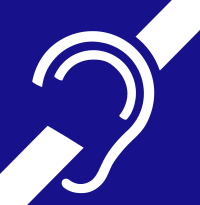
Photo from wikipedia
Introduction Several studies have shown that efferent pathways of the auditory system improve perception of speech-in-noise. But, the majority of investigations assessing the role of efferent pathways on speech perception… Click to show full abstract
Introduction Several studies have shown that efferent pathways of the auditory system improve perception of speech-in-noise. But, the majority of investigations assessing the role of efferent pathways on speech perception have used contralateral suppression of otoacoustic emissions as a measure of efferent activity. By studying the effect of efferent activity on the speech-evoked auditory brainstem response (ABR), some more light could be shed on the effect of efferent pathways on the encoding of speech in the auditory pathway. Objectives To investigate the relationship between contralateral suppression of transient evoked otoacoustic emission (CSTEOAE) and unmasking of speech ABR. Methods A total of 23 young adults participated in the study. The CSTEOAE was measured using linear clicks at 60 dB peSPL and white noise at 60 dB sound pressure level (SPL). The speech ABR was recorded using the syllable /da/ at 80 dB SPL in quiet, ipsilateral noise, and binaural noise conditions. In the ipsilateral noise condition, white noise was presented to the test ear at 60 dB SPL, and, in the binaural noise condition, two separate white noises were presented to both ears. Results The F0 amplitude of speech ABR was higher in quiet condition; however, the mean amplitude of F0 was not significantly different across conditions. Correlation analysis showed a significant positive correlation between the CSTEOAE and the magnitude of unmasking of F0 amplitude of speech ABR. Conclusions The findings of the present study suggests that the efferent pathways are involved in speech-in-noise processing.
Journal Title: International Archives of Otorhinolaryngology
Year Published: 2022
Link to full text (if available)
Share on Social Media: Sign Up to like & get
recommendations!